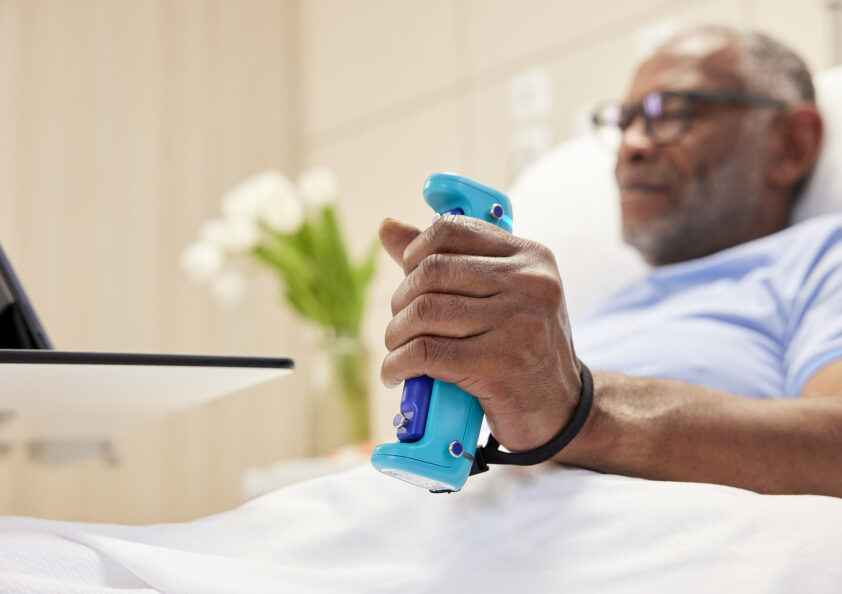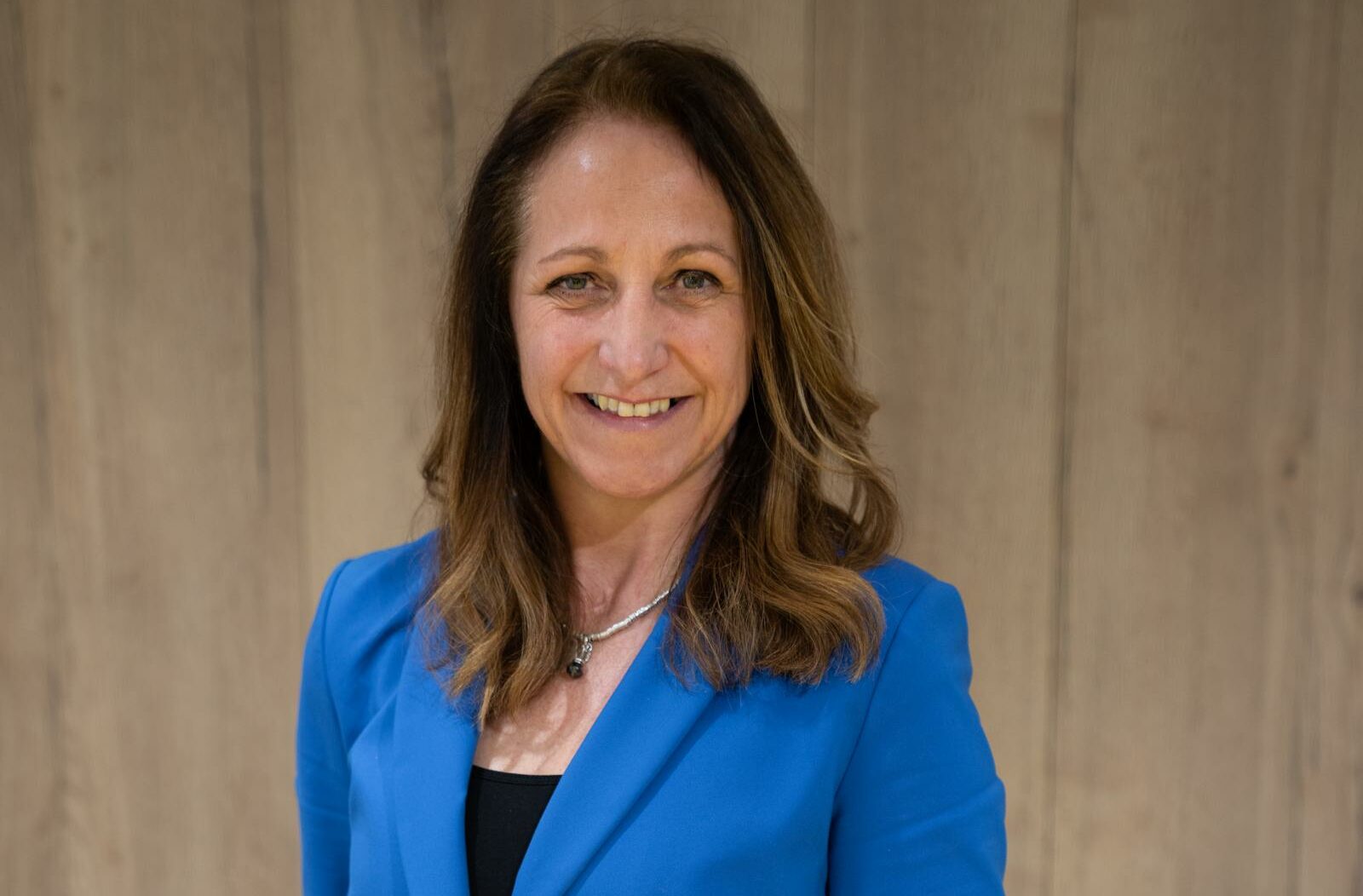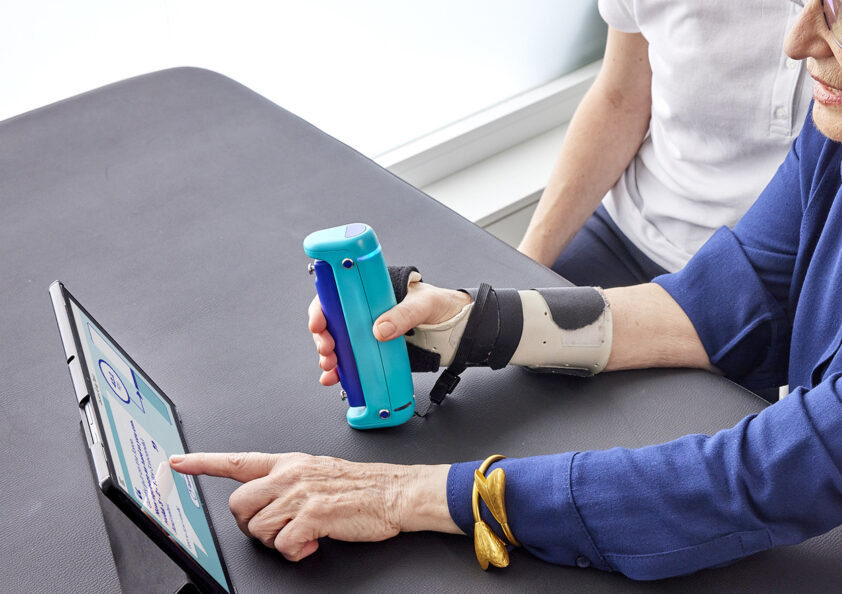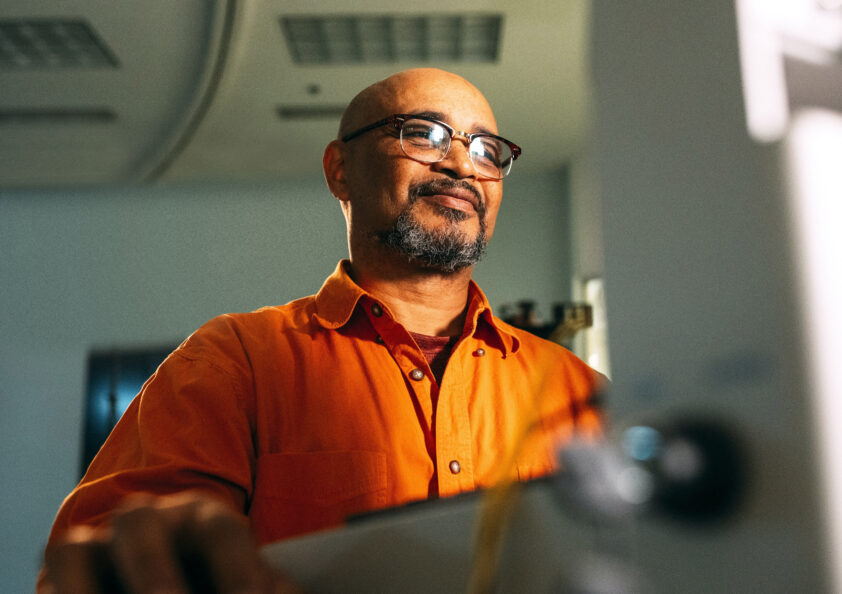
Setting goals after stroke or brain injury
Goal setting is a crucial part of the stroke and brain injury recovery process, helping people on their journey to gain back control and independence over their lives.
Goals can help us to stay focused and remind us that our rehabilitation journey has a purpose that is meaningful to us.

But where should you start with setting goals?
Understanding what’s important and means the most to you is key, says Kate Allatt, stroke survivor and GripAble ambassador. In this blog, Kate shares her experience of stroke recovery and how goal setting helped her to become the best version of herself.
Post-stroke: in the beginning
At the age of 39, I experienced a rare and catastrophic brain stem stroke, and then went on to develop locked-in syndrome – a state where you are conscious and aware of what is going on around you, but you cannot move nor communicate verbally. Due to this, doctors said I’d never walk, talk or use my arms again. As a mother of three and an avid fell runner, this was devastating news to hear.
After two weeks in this state, my friends noticed my eyelid flicker slightly and set about trying to ‘unlock me.’ I followed their instructions and managed to flicker my eyelids once for ‘no’ and twice for ‘yes.’ This felt like a huge breakthrough, yet I spent a further eight weeks in ICU and only managed to move my right thumb three millimetres.
I was determined not to be discharged to a nursing home – I couldn’t bear the thought of my children no longer having their fun, hands-on mum at home. This was a key driver for me, and something I reminded myself of throughout the long rehabilitation road.
Compelled by the concept of neuroplasticity – the brain’s ability to change and adapt as a result of experience – I repetitively, frequently and intensively focused on each part of my body to try and will it back to life.
I came up with ambitious goals, telling myself and those around me that ‘I will walk again and walk out of hospital,’ and ‘I will hug my kids,’ and even that ‘I will even run by the first anniversary of my stroke.’ Essentially, my mindset was never ‘if’ these things happen, but ‘when,’ despite what the medical experts were telling me.
I soon learned that the rehabilitation process was not going to be a linear journey – I made gains – some significant, most small – but also experienced many setbacks. I had to keep in mind that I was a human – not a machine – and though I often felt despondent, there was always tomorrow and a chance to try again.
Peer support to help you flourish
I am pleased to be hosting a Zoom session for adult stroke and brain injury survivors where I will talk openly about my experience and challenges, and provide the opportunity for fellow stroke survivors to connect and support one another with our goals.
Date: Tuesday 19 October 2021
Time: 5pm to 6pm
To find out more or to book your place, please click here to email Kate Allatt

Advice for goal setting
It can be difficult to know where to start with goalsetting when there is so much you want to be able do again post-stroke or brain injury. But identifying what matters the most to you and brings you joy must be the first step.
Some examples of goals could include:
- Sitting in a wheelchair unaided
- Feeding yourself
- Tying up your own hair
- Applying make-up
- Tying your own shoelaces
- Using your phone or laptop
- Drinking a pint in the pub
- Preparing food
- Driving your car
Breaking down your goals into smaller, manageable chucks can help make those things you want to achieve feel more attainable, and less overwhelming. These short-term goals are what your therapists, allied health professionals and loves ones can support you with.
Maintaining motivation to achieve your goals can be a challenge, but connecting with fellow stroke survivors who are on the same journey can make a real difference.
The relationships I formed with stroke survivors that were or had at one point been ‘like me’ were crucial to my recovery – we shared our achievements with each other, however small they seemed, and encouraged each other to become to very best versions of ourselves by never losing sight of our goals.
It is also important to protect and prioritise your mental and physical health throughout the process by practicing self-care through wellbeing-focused interventions. Improved mental and physical health helps to build confidence, self-esteem, and resilience, which will in turn assist with the motivation and engagement you need to help you reach your goals.
By surrounding myself with a strong network of social support and keeping as active as possible, I am pleased to say that I did something many never thought possible and managed to run just one year after my stroke.

